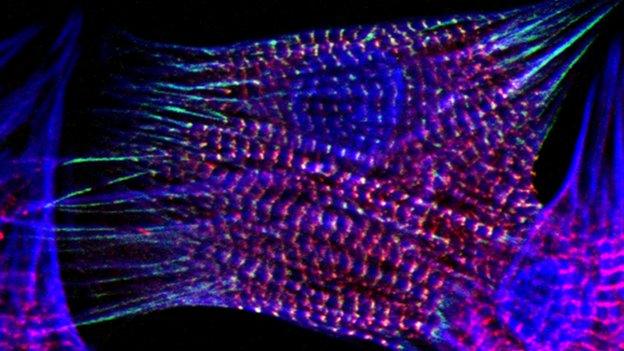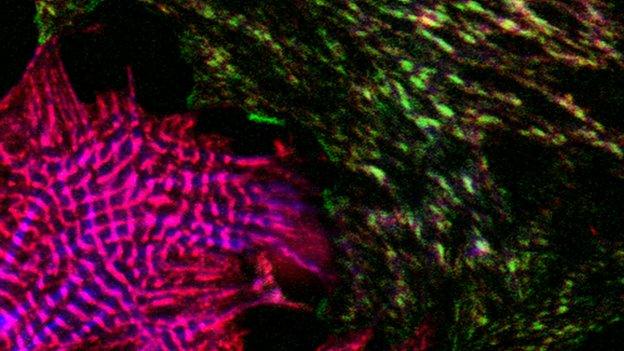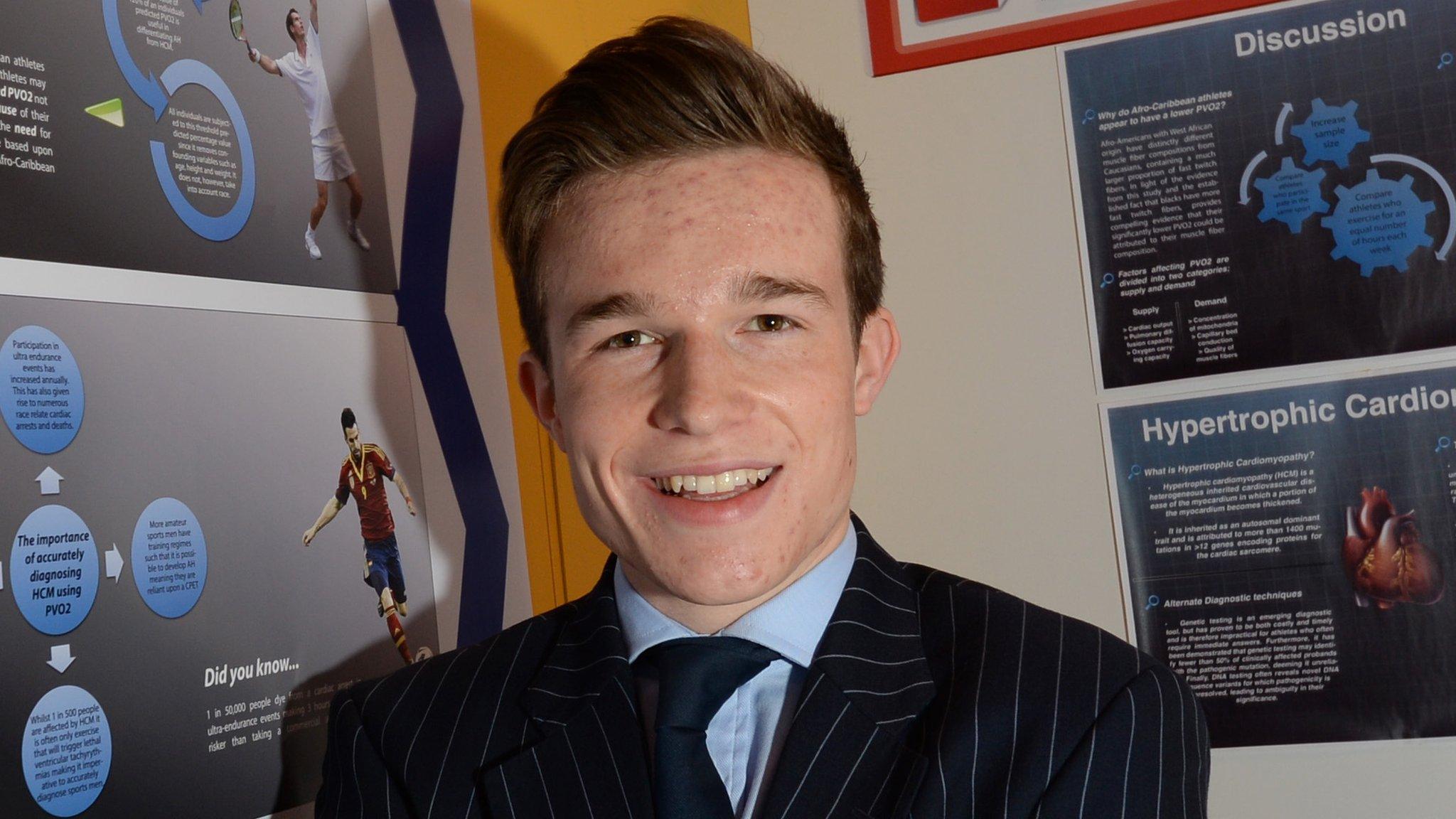Protein structure 'holds key to heart muscle disease'
- Published

The structure of a key protein implicated in diseases affecting the heart muscle has been uncovered, scientists say.
Researchers, including some from King's College London, say they now understand why faulty alpha-actinin stops muscles from working properly when people have the heart disease cardiomyopathy.
Their conclusions could lead to better screening and potential treatment for other conditions caused by the defect.
The research took eight years.
In striated muscle, in the heart as well as skeletal muscles, alpha-actinin holds the layers at regularly spaced intervals over huge distances.
After working out the structure of the protein, the researchers, from King's College London as well as institutions in Russia, Norway and Austria, looked at what happened when it was mutated.
They showed, by tinkering with the structure, that when key parts of the protein were faulty, heart muscle grown in the laboratory did not form the striations needed for it to withstand contractions.

Heart muscle grows in layers when the protein is working

But the muscle becomes disorganised when the protein is damaged
In recent months, genetic analysis has identified several gene mutations in alpha-actinin.
Understanding the structure of the protein will now enable researchers to identify which mutated genes are actually causing problems and which have little effect.
It will have implications for other disease where alpha-actinin has a role, such as some types of muscular dystrophy.
Prof Mathias Gautel, professor of molecular cardiology from King's College London, said: "We have worked out the structure of a major protein responsible for muscle layering.
"This gave us new insights into how muscle is built and how its movement is controlled.
"We hope that this will help geneticists make accurate diagnoses of muscle diseases and may ultimately lead to designing new therapies."
Prof Jeremy Pearson, associate medical director at the British Heart Foundation, which helped fund the research, added: "There is currently no cure or treatment for cardiomyopathy and these findings demonstrate the value of funding laboratory research to answer fundamental questions that could ultimately lead to treatments for patients."
- Published29 September 2014

- Published20 August 2014

- Published9 March 2014
